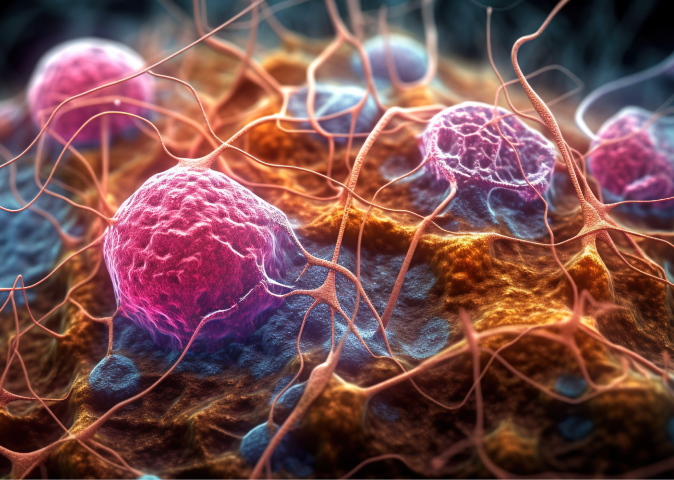Biomolecule conjugation is critical to many applications such as bead-based assays, ELISA and chromatography by affinity. Unfortunately the classical methods are known to be tedious and with low efficiency. Trilink Biotechnologies has come this year with the solution, an innovative chromophore-linker-based conjugation chemistry called ChromaLink.
ChromaLink Biomolecule Conjugation – a new efficient biotinylation solution
First, the aromatic hydrazine (HyNic) is incorporated on amine-containing biomolecules such as an antibody using S-HyNic. The reaction is spontaneous at pH7.2-8. Similarly, aromatic aldehyde (4FB) is incorporated on biomolecules with S-4FB as shown on the figure just below.

Finally, a simple addition of the HyNic-modified biomolecule to the 4FB modified biomolecule in a pH5–6 produces the conjugate with efficiency above 80%. After a procedure of only 2.5 hours, the final conjugate is both heat stable (2 hours 95°C) and pH stable (pH2-10). The beauty of the technology is not just the efficiency providing high yield of conjugate, it also allows simple and direct quantification in few minutes instead of hours with traditional methods.
Indeed, the linker (a bis-aryl hydrazone structure) is a UV-traceable chromophore. So the absorbance signature is acquired on any conventional or NanoDrop spectrophotometers (as illustrated below). And, the sample is recovered after analysis.

It provides a rapid (5-minute) and non-destructive quantification of incorporated biotin. The biotin molar substitution ratio (MSR) can be determined.
ChromaLink technology, based on HyNic/4FB chemistry, offers:
- Efficient conjugation chemistry
- No metals, reducing, or oxidizing agents are required
- Fast conjugation kinetics
- Conjugate bond stable to extreme heat and pH
- Reaction observation in real time and quantification of the number of linkages in a conjugate
- Versatility: it is compatible with proteins, oligos, and peptides that can be conjugated to each other and to surfaces
- Excellent retention of inherent biological function
What are the practical benefits of the ChromaLink Biotin Antibody Labeling Kit?
The technology is available as ChromaLink Biotin Antibody Labeling Kit and a version for one shot antibody labelling. This offers you the following benefits:
- Reproducible production thanks to UV-traceable final conjugate
- Rapid and non-destructive determination of the biotin molar substitution ratio (MSR)
- Reduced aggregation, minimized steric hindrance, and enhanced solubility with an extended PEG3 Spacer
- Scalablility from 25 µg to 1 mg of antibody with also a one shot version for 100µg
- Convenient kit format containing buffers, spin columns, and calculator to determine reaction quantities
ChromaLink technology opens the door to numerous applications in Life Sciences
Every and any combination is possible between oligonucleotides, proteins, peptides and others biomolecules. Thus, ChromaLink can help producing HRP-antibody, R-PE-antibody, Biotin-antibody, Digoxigenin-antibody… 4-color immunofluorescence is now possible as illustrated below.

It can be also protein‐oligonucleotide conjugation as shown below.

Why not conjugate an aptamer to an active biomolecule for targeted therapy?
Actually such approaches are already trendy using antibodies, the famous antibody drug conjugate (ADC).
Click chemistry is used for tagging during library preparation for next generation sequencing notably (Click-seq). ChromaLink, the HyNic/4FB chemistry is a great alternative to Click chemistry.
An attractive and even magnetic solution to catch biotinylated molecules – NanoLink

How could I mention the Biotin conjugation using ChromaLink without talking about the new NanoLink Streptavidin Magnetic Beads?
Indeed, these are magnetic beads conjugated with streptavidin using the efficient HyNic/4FB chemistry. Small ones (1µm) are called NanoLink and bigger ones (2.8µm) are MagnaLink. These beads have a higher binding capacity than any others, as illustrated to the right. They catch 3 to even 15 times more biotinylated biomolecules.
Interested in using these new reagents?
If you have any questions or would like to know more about using these products in your research, get in touch with me below, I’ll be pleased to help.



